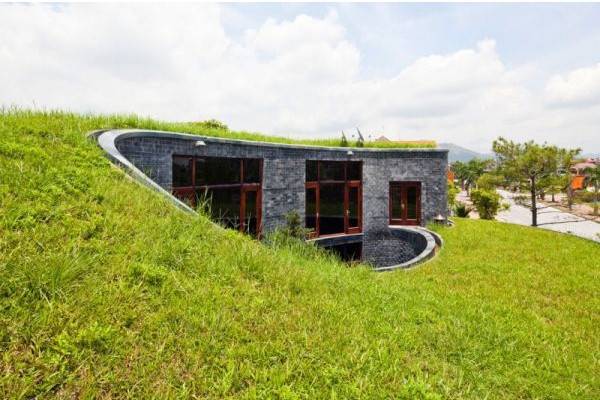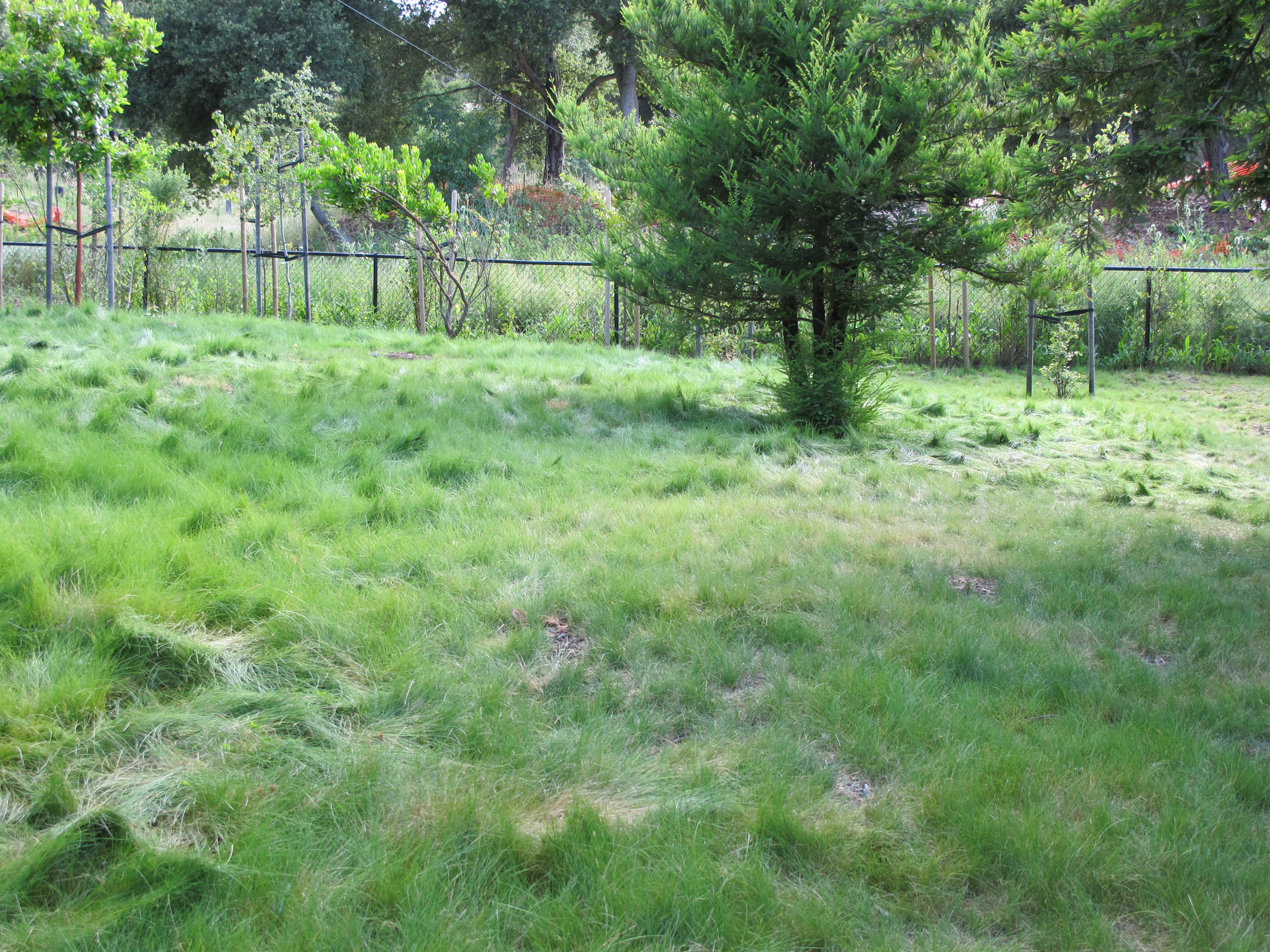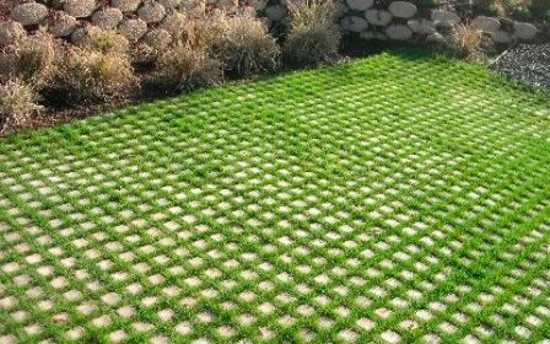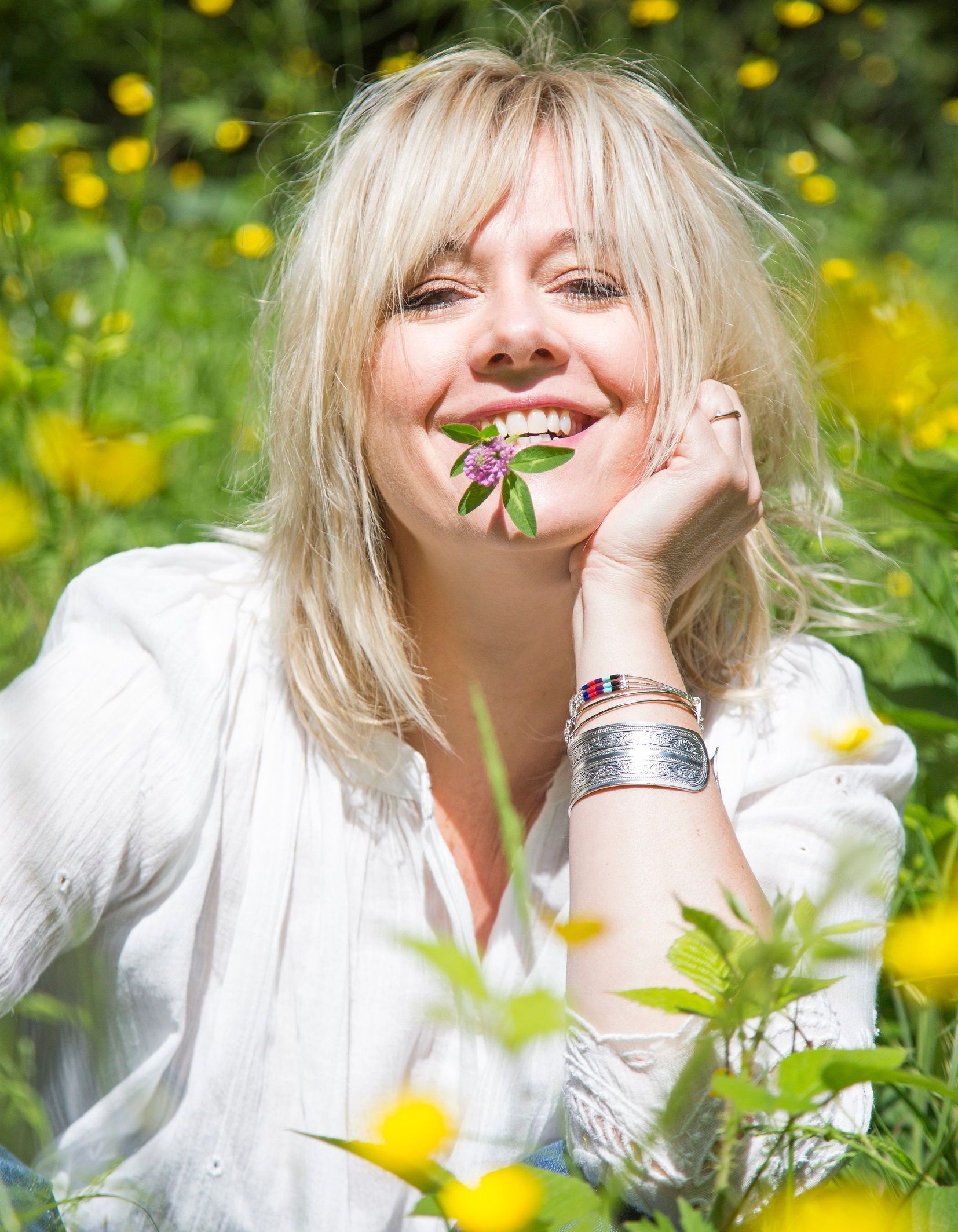One of the hottest trends in landscaping, SmartGrass is a new type of artificial grass that is realistic, durable and environmentally friendly. We're experts in artificial grass installation that looks and feels much more real than other artificial turf and fake grass products. Learn more about the synthetic grass that's revolutionising lawn maintenance for NZ homeowners.
Astro turf is made from a variety of human made unnatural materials including polyethylene, polypropylene and nylon. These materials are built to last, potentially for centuries. While individually these components can theoretically be recycled, in reality this isn't happening for fake lawns for the following reasons. First, the materials are often bound together making it impossible to separate them and therefore making it impossible to recycle, because recycling of the materials requires them to be separated and pure. Some products are made from just one material which means at least, theoretically they can be recycled. After spending 5 – 10 years outside on top of soil and surrounded by planting, with people running and walking across it, the amount of debris they collect makes the material very hard to prepare for recycling.
You can't recycle plastics with contaminants in like soil and grit, which is why we're supposed to rinse plastic before putting in the recycling bin. Thirdly, this is a specialist form of recycling, local councils certainly aren't set up to recycle rolls of fake grass, they need to be sent away. What will most people prefer, dumping it for free in the local tip or paying for it to be taken away and cleaned for recycling? Hopefully one day it can be recycled as we need the existing lawns to be recycled, but that doesn't account for the remaining 14 points.
One way in which synthetic turf benefits the environment is by allowing you to conserve water. Homeowners use thousands of gallons of water for landscaping maintenance each year, and most of it is wasted. By installing artificial grass, however, you can save these thousands of gallons and hundreds of dollars by eliminating the need for daily watering.
Synthetic turf is made of a polyethylene material that doesn't need to be watered to stay green. Although occasional rinse-downs are suggested to clear away any dirt or debris, your artificial grass lawn will stay perfectly green and healthy without any water. In fact, synthetic grass installations are estimated to conserve 4 to 8 billion gallons of water annually worldwide. By switching to turf grass, you not only get a pristinely beautiful lawn, but you do your part to conserve billions of gallons of water each year. Sacramento residents want to do their part to reduce their environmental impact and be more eco-friendly. However, it's not always easy to find practical ways to do that.
Many suggestions for lowering your carbon footprint may seem unreasonable or just impractical for your current lifestyle. However, one easy way to make your home more environmentally friendly without sacrificing anything is by installing artificial grass. With aesthetic and functional benefits for the whole family, it's an easy solution that benefits you, your wallet, and your planet. By creating a dense plastic barrier on top of compacted soil and sand, no garden material can reach the soil beneath it.
Things like leaf litter and grass clippings, which may be in tiny amounts in a normal garden after mowing and tidying but still exist. Natural materials like this are essential for feeding soil organisms like worms and microscopic animals that keep soil healthy. This is little different to impermeable hard landscaping like patios but a really important point if you're considering replacing a living lawn with a fake lawn. Even if you remove all clippings and leaves from a real lawn, real grass grows and dies back and rejuvenates every year.
Roots grow and die, some leaves die and these form natural material drawn into the soil to feed soil life. I could go into great detail about why soil life is important because it's the building blocks of our entire way of life; a simple example is birds picking out bugs and worms for food. Some astro turf will have worms beneath but this will be under a new laying or toward the edges where soil is richer from nearby planting. Over time, there will be nothing beneath fake grass for most soil life to survive.
60 percent of these lawn chemicals go to waste and contribute to chemical runoff. Not only is this runoff harmful for your kids and pets, but it also worsens water pollution that can sicken other humans and local wildlife in the area. By choosing to install artificial grass landscaping, you're protecting local wildlife by eliminating your use of these toxic chemicals and environmental pollutants. Synthetic turf is completely non-toxic and doesn't require any maintenance chemicals to stay looking beautiful and weed-free.
It's completely safe for kids and animals, so you can rest assured that you're doing your part to protect every member of your local environment. PST Lawns artificial grass products are 100% safe and environmentally friendly. Our durable, natural looking artificial grass is designed specifically for the domestic market making it completely eco-friendly. And, if you're fed up with a muddy lawn, our synthetic grass provides a very resilient and weatherproof, all-season and mud-free outdoor space. Reducing your shower time by just one minute can save 365 gallons of water a year.
Refraining from hosing down your patio or driveway can save 960 gallons! And filling your bath tub up only halfway can save 3,650 gallons a year. Just imagine how much water installing artificial grass or synthetic turf system can save! Installing a Heavenly Greens artificial grass system for home landscaping alone can save a whopping 56,000 gallons of water per year. On an average-sized sports field, that number skyrockets to millions of gallons per year. When it comes to carbon footprints, there's simply no comparison between natural grass and an artificial grass system from Heavenly Greens.
While synthetic grass may look and feel like the real thing some simply can't get past the fact that it's plastic. It is hailed for its water-saving benefits, but artificial turf has its own environmental drawbacks. It is a petroleum-based product that creates pollution and waste in the manufacturing process.
And, while it is often made partially with recycled materials, it is not biodegradable. After a long life of from 15 to 25 years, it will, ultimately, end up in a landfill. The world is moving towards an age of water scarcity, signs of which are apparent, already. In the case of water usage, artificial grass' environmental impact is significantly lower than natural lawns. With a synthetic lawn installation, you can help do your part to reduce the amount of water wasted superficially.
There are also growing concerns about the impact of the synthetic chemicals that are added to artificial grass on human health and the environment. The EU has been investigating specialist artificial turf used on sports fields for suspected carcinogens, and is considering banning intentionally added microplastics. While these are different products to those sold to home gardeners, Berg says artificial pitches are sometimes reused for landscaping. The turf installation process is finished by adding the infill to the Matrix Turf surface. Hellas has introduced Geo Plus infill to its Matrix Turf systems, a 100% organic and environmentally-friendly infill approved for LEED credit government qualifications. Matrix Turf also offers Hellas' patented REALFILL™ infill and the Sand & Rubber infill options, which are composed of 100% recycled rubber and allow for the recycling of 25 million tires per year.
This is done, in no small part, by providing a sustainable alternative to natural grass and the harmful side effects caused by its constant maintenance requirements. One of the most measurable "green" attributes of synthetic turf systems come from their impact on water usage. According to the Los Angeles Department of Engineering, each synthetic field saves approximately 2,480,000 gallons of water per year. This is all done without the use of pesticides, fertilizers, or other chemicals, nor does it require mowing. I get that synthetic turf doesn't provide the same water capture or ecological benefits of a soil-based landscape. And it would be bad for the environment if Los Angeles' yards were be blanketed in fake grass.
For that reason the city should reconsider whether artificial turf deserves the full $3.75-per-square-foot lawn replacement rebate, which is part of the water conservation program. There have been many articles written about the negative impact rubber crumb can have on people's health due to the rubber crumb containing arsonic and other harmful chemicals. None of the artificial lawns that we install use rubber crumb infill. We use Kiln Sand as our infill which is a natural product. No doubt you've read up on the many benefits of synthetic grass.
You're sold on the low-maintenance aspect, the mud and weed-free elements and the fact there's no watering or mowing required. And of course, you get a lawn that looks absolutely amazing, year-round. But when it comes to the environmental aspects, have you satisfied yourself that the eco-credentials of synthetic grass meet all your expectations? With this in mind, let's take a look at how eco-friendly artificial grass really is. "Natural grass doesn't waste water—people and faulty irrigation systems waste water! " Water waste is another detail that comes up a lot from artificial-turf manufacturers as a primary reason to claim an advantage over natural turf in terms of sustainability.
And it's true that a traditional lawn can use excessive amounts of water, especially in a poorly designed system, but there are often additional solutions to consider. Aside from the high cost, short lifespan, and maintenance requirements of artificial turf, serious environmental concerns are another reason we can't recommend it. The synthetic-grass industry pitches its products as sustainable, emphasizing the renewable ingredients within the grass, as well as the claim that the turf can be recycled at the end of its life. It's easy to understand the appeal of a synthetic lawn, especially once you get a look at the convincing level of realism in a showroom full of the best engineered-turf options available today. We are experienced and have a thorough understanding of the needs of your outdoor space. We offer only quality artificial turf that effortlessly blends with your outdoor space and looks like natural grass.
We understand that the needs of every space are different and bring you a huge range of artificial grass products to suit your exact needs. All our artificial turf is created from high-grade materials and known for its vibrant appearance. Eco Grass brings artificial turf that requires minimal upkeep which is ideal for a multitude of environments. Artificial grass is gaining ground in gardens, sports centres and hotels worldwide because of its many advantages vs. natural grass. The most obvious perks make artificial grass a flexible and affordable solution for an evergreen lawn. But did you know that it even brings more peace and tranquillity to your home?
Is Astro Turf Environmentally Friendly " Although artificial grass can vary from company to company, but most are made out of plastic. If you're worried about the environmental impact fake grass can have, the good news is that most fake grass is actually made out of recycled materials. A lush, beautiful lawn is something most homeowners yearn for, but maintaining one takes time and skill, something which many of us don't have in abundance. Invented in the 1960s mainly for use in covered athletic fields, artificial grass has come a long way. Nowadays, it is increasingly difficult to tell whether the lawn you're standing on is artificial grass or natural lawn.
Let's take a look at why artificial lawns are becoming more and more popular across Australia. Sports fields have been known to increase their temperature by a few degrees when artificial turf is used. Again this is the rubber crumb causing the problem as the rubber radiates heat. We use Kiln Sand to help the grass stand up and keep the lawn flat.
Kiln Sand actually helps reduce the temperature of artificial grass as sand doesn't radiate heat. There will be very little difference in temperature between a real grass lawn and an artificial one in the summertime. SmartGrass is a versatile artificial lawn perfect for a range of applications, both residential and commercial. Synthetic grass doesn't need to be a tradeoff – you can get all the benefits of real grass with none of the hassle.
Learn how SmartGrass can help you in ways other artificial turf products can't. Join hundreds of other happy homeowners who have made the switch to using artificial grass in Christchurch and all across NZ. And it can't absorb CO2 and other pollutants from the air we breathe." David Hedges-Gower Lawn Care Expert. Natural lawns or planting allow water to drain into the soil surface easily, helping to lock deluges of rain in the ground. Whereas solid surfaces cause run off which leads to flooding usually by overloading drains and sewers with too much water all at once. Occasionally they contribute to direct flooding too, especially in paved front gardens.
Although water can drain through fake lawns (at least if laid well it should!) this can be slower and less effective than real grass due to the ground below needing compaction to make it solid and flat. Obviously this is going to be better than impermeable patios but it's not an either or game, we need to be aware of these issues and choose other options that don't cause run off . This may sound really silly if you're thinking of installing plastic grass, escaping a natural surface is probably one of the reasons you want it in the first place, but I urge you to think again. I actually feel this is one of the most important points on this list.
Some of my favourite childhood memories are sitting on a soft lawn, hands on the grass, plucking a blade of grass to whistle with, or a daisy or dandelion flower, or a plantain leaf. That sense of touch and the smell of mown grass is such an important part of my life experience and remains so today. I feel sad at the thought of children growing up with fake lawns and everything they will miss in those early years as a result. Even getting a bit muddy or seeing a spider, all of these things are little life experiences that make us who we are.
But when it comes to your hotel, there's a lot more you could do to go green than you probably realize. For example, did you know that an artificial turf is much eco-friendlier than a natural one? Not only is it easy to maintain and if installed by a professional landscaping company, it could last incredibly long and not lose its appeal. But synthetic grass is also more eco-friendly than a natural lawn in many ways. Are you considering installing artificial grass in your garden but are concerned about the environmental impact? It's important to be an environmentally conscientious customer and we'd like to take this opportunity to put your mind at ease.
Whilst nothing is 100% environmentally friendly, there are plenty of surprising ways artificial grass is greener than its natural counterpart. See, it really comes down to why we grow plants in the urban environment. Plant materials provide so much more than just aesthetic value. They help improve water and air quality, reduce temperatures, reduce storm water runoff, and provide habitats for animals, insects, bees, and birds.
With our increasingly built urban environment, less and less of our land is porous, allowing rainwater to infiltrate into our soil, which acts as a natural filter. This means our landscapes need to act more like sponges, allowing water to move slowly over the soil and spread its benefits. Contouring the landscape helps water sink into the soil, and adding plant materials and mulch increases the absorbency of our soil. Many of us are drawn to artificial turf because we care about the environment.
We're tired of the grueling tasks of mowing and weeding, as well as applying fertilizers and pesticides when they're needed. However, if your priority is caring for the environment, artificial turf is not going to be the best option. In fact, while manufacturers promise recyclability, it is likely to end up in a landfill. When components break down, it's possible for the chemicals or plastic materials to escape into the rest of the environment.
Just because you have an artificial grass lawn doesn't mean you can't have a great border with plants in it. We are able to shape our artificial lawns to replicate a real grass lawn. If you have an existing border you may want to increase the size of it so you can have additional plants. This will provide a great habitat for worms and burrowing insects.



























No comments:
Post a Comment
Note: Only a member of this blog may post a comment.